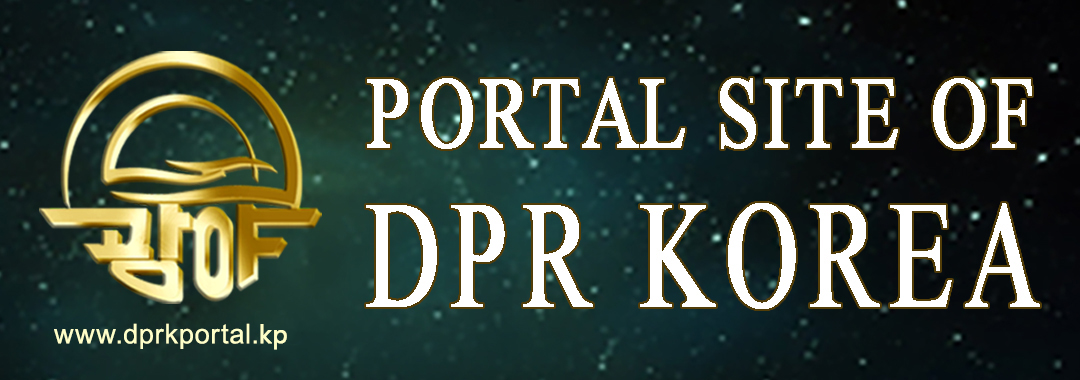



Jo Dec 11, 2025
Saenap (a Korean brass wind instrument) is a peculiar national wind instrument.
Hard woods like paktal tree, date tree, etc. were used for its hollow pipe.
It is basically the same as a flute in the way of playing. It is characterized by bright and gorgeous timbre, fluency and strong appeal, and it produces great volume.
It is used as a melodic instrument in holiday amusements, instrumental music of peasants and dance music boasting of the pleasure of rich harvest, and in mixed orchestra it usually appears in the parts stimulating the national interest.
...
Jo Dec 6, 2025
Our country was well known to the world as a land of silk fabrics from olden times.
According to the records, the Korean ancestors started to acclimatize undomesticated silkworms to raise mulberry silkworms in olden times, and they obtained raw silk from silkworms to weave fabrics for clothing in the ancient times.
In the period of the Three Kingdoms, silkworm culture further flourished and their high-level weaving techniques led to the production of several kinds of high-grade silk fabrics with beautiful and colourful patterns to be sold to the neighboring countries.
Korean silk fabrics were accepted to be far superior to those of other countries in terms of quiet sheen, smooth touch and delicacy and even more expensive than gold. In the period of Koryo, they were exported to the far Arabian peninsula as well as to the neighbouring countries, gaining fame as the best on earth.
The main feature of the Korean silk distinguished from those of neighbouring countries was not to boil cocoons enough and not to completely remove sericin when reeling raw silk off them.
The fabric woven from such silk was not too loose but a little stiff like starched and felt fresh and fine.
The Korean ancestors were also the first to devise dye printing for silk cloth.
As mentioned above, the Korean nation is a resourceful and civilized nation which created and developed the silk culture admired by the world people a long time ago.
...
Jo Dec 2, 2025
Chonsangryolchabunyajido is an astronomical chart made in the late fourteenth century.
It dates back to 1395, based on the Koguryo’s astronomical chart carved on a stone.
The Koguryo’s astronomical chart (a table of constellations carved on a stone of about 2 meters in length and 1.2 meters in width) made between the late fifth century and the early sixth century shows 1 467 stars that were visible in the night sky of Pyongyang at that time. They are categorized in 282 constellations in a circle. The black ink copy of them on a piece of paper was used as base data for astronomical observation and calendar compilation.
Chonsangryolchabunyajido (122.8cm wide and 209.9cm long) was considered a very scientific and accurate astronomical chart in those days.
As one of the precious cultural legacies demonstrating the astronomical development of our country in the middle ages, it provides valuable information for the study of astronomical history.
...
Jo Nov 22, 2025
Kim Chaek University of Technology International Conference―2025 was held on the subject “Science and Technology―Power for Development and Strategic Means” from November 11 to12.
Presented there were 120-odd scientific and technological papers of great scientific value and practical significance.
Drawing some universities and scientific research institutes from several countries including Russia and China, the conference was divided into five sections: Earth and Environmental Science, Metallurgy and Material, Mechanical and Energy Engineering, Automatics and Information Technology, and Basic Science, Chemical Engineering and Bioengineering.
Many academic findings achieved in the scientific research were reported from many papers including “Effective Non-seismic Technologies for Exploring Reservoir of Oil and Gas”, “Effect of Laser Power and Scanning Speed on Properties of Laser-Induced Graphene”, “A Method for Improving Accuracy of Positioning based on RSS Model in 3D Wireless Sensor Networks”, etc.
During the conference, the university hosted a reception for the participants.
The conference served as a good occasion of exchanging valuable experiences and knowledge.
...
Jo Nov 5, 2025
Oungum is a musical instrument which was initiated, led to completion and named by Chairman
...
Jo Nov 3, 2025
We should have a state-oriented attitude and patriotic stand towards the science and the era rather than wishing for any academic degrees or titles, honor or great scientific and technological successes. This is the remark made by Merited Scientist, Candidate Acad., Prof. Ph.D. Ri Mu Chol, an institute head of Bioengineering Institute, to the students taking the first step of research.
...